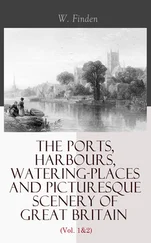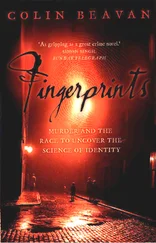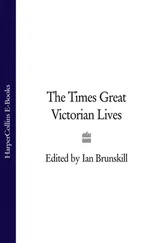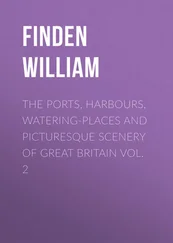From cell 29 of Fulham gaol she petitioned Cross again in 1878. In her efforts to win his mercy, she invoked her youth at the time she killed Saville, her contrition, the voluntary nature of her confession, her good behaviour in gaol. She tried to convey what had driven her to murder, in jagged, insistent phrases:
the unconquerable aversion to one, who had taught her to despise and dislike her own mother, who robbed that mother of the affection both of a husband and a daughter, the sense of the wrong done to her mother when once discovered became yet more intensified after her death, her successor never alluding to that mother but with taunting sarcasm, she therefore sought to retaliate on its authoress, the mental agony her own mother had endured.
The petition was refused. She pleaded for mercy again in 1880, in 1881 and in 1882, when she added to the list of her tribulations her failing sight (she had an eye infection) and the 'degrading associations' to which she was subjected in gaol. These pleas were turned down by the new Home Secretary, Sir William Vernon Harcourt, a member of William Gladstone's Liberal administration. The Reverend Wagner wrote letters on her behalf and found other churchmen - such as the Bishop of Bloemfontein - to do the same. Constance unsuccessfully petitioned Harcourt again in 1883, and by 1884 was almost in despair. She had served nearly two decades, she implored him, 'without one ray of hope to brighten a life which since earliest recollection has been passed in confinement, either of school, convent, or prison, while before her now only lies a gloomy future of approaching age after a youth spent in dreary waiting, and heart-sickening dis-appointment, in complete isolation from all that makes life worth living, amid uncongenial surroundings from which mind and body shrink'. Harcourt again marked her petition 'nil'.
Only after serving every day of the twenty-year sentence, on 18 July 1885, was Constance freed.

CHAPTER NINETEEN
FAIRY-LANDS OF FACT
1884-
In 1884 William and his second wife sailed for Tasmania. He had accepted a position as Superintendent and Inspector of Fisheries in the colony, at a salary of PS350. He adopted his middle name as part of his surname, and was now known as William Saville-Kent. His half-sister Mary Amelia, now twenty-nine, travelled with them; she had been working as a governess to two girls on a farm in Wiltshire. Two years later they were joined in Hobart, the island's capital, by William's other three half-siblings, first Acland (now twenty-six, until recently a linen salesman in Manchester), then Eveline (twenty-eight - she had been the baby asleep in the Road Hill nursery on the night of Saville's death) and Florence (twenty-five).
William's main tasks in Tasmania were to revive the native oyster industry, which was in danger of being destroyed by over-exploitation and neglect, and to advance the introduction of salmon to the colony's waters. He soon made enemies. His fellow fisheries commissioners complained that he neglected his 'proper duties' to pursue experiments - he had constructed a huge hatchery in his house in Hobart. He was also 'ungraciously only too prone to attribute ignorance to the Commissioners'. William claimed that the Tasmanians had not succeeded in cultivating salmon in their waters at all, only trout. His contract was terminated in 1887.
However tactless William may have been, his talents were noticed elsewhere in Australia. Over the next decade he was given posts as adviser to the governments of Victoria, Queensland and Western Australia. He moved first to the southern city of Melbourne, the capital of Victoria, known in the 1880s as 'Marvellous Melbourne' and 'the Paris of the Antipodes'. His half-brother Acland headed to the goldfields of Victoria in 1887, but quickly fell ill. He died in Melbourne the same year, with William at his side.
William and his wife moved in 1889 to a house on the river by Brisbane, a sprawling, makeshift town that served as the capital of the north-eastern state of Queensland. William adopted two spiny anteaters, 'Prickles' and 'Pins', as pets; though they were shy at first, he wrote, curling away from him under their spikes, after a while they followed him around the house and grounds, or let him carry them, dandled over his arm like lapdogs. He also acquired a pair of fern owls, 'big balls of fluff' with 'gleaming', 'glorious golden eyes', which he adored. William had himself grown a wild, wiry beard that engulfed the lower part of his lean face, leaving all the expression to his high, glinting eyes. His hair lay flat across the scalp, parted in the centre. When out inspecting Queensland's fisheries and oyster beds, he wore linen suits, elasticated boots and a pith helmet.
The 'excessively timid' fern owls, William reported, changed shape according to what they were feeling. They showed 'delightful abandon' before members of the house-hold, but would freeze and shrink into themselves at the approach of a stranger, so that they looked just like sticks. When William came home after a few days' absence, the male bird would puff up in pleasure, extending every feather so that he almost doubled in size. The owls, like the Saville-Kents, had no offspring, but they made an elaborate nest each year. William once slipped some bantam eggs into the empty hollow, and found that the birds sat on them happily, waiting for the chicks to hatch. Three times a day he hand-fed the fern owls with raw beef steeped in water, adding a grasshopper, a beetle or a moth as a treat. To capture the astonishing range of his birds' moods and bodies, he took up photography. A camera, like a microscope, gave its owner extra powers of sight. William could now look for longer as well as more closely, and he could show others what he had seen. He took pictures, enlarged them, studied them with a magnifying glass. With his new instrument, he began to record the extraordinary coral forms of the 1,200-mile-long Great Barrier Reef, which he described as his 'fairy-land of fact' off the Queensland coast.
In 1892 William returned to England with sixty cases of specimens to present to the Natural History Museum and a cache of paintings and photographic prints to show to a publisher. He was accompanied by his wife and the fern owls. The male owl developed a taste for strawberries during its stay in London, and the female for slugs; both were keen on the city's cockroaches.
William Saville-Kent's The Great Barrier Reef was published in London in 1893. This beautifully produced volume made the reef famous, and served as the standard reference work for decades. William's silvery photographic plates were reproduced next to written descriptions of the live corals' colours: lemon, myrtle, shrimp pink, apple, crimson, electric blue. The fish he photographed looked like sea monsters, their eyes shining and their scales dark as iron. At the end of the book were colour plates of his paintings of fish and corals, the anemones waving their tentacles, wild and bright.
William sailed back to the Antipodes that year to take up an appointment at the oyster fisheries in Perth, Western Australia. Though the owls went with him, Mary Ann remained in England. Their marriage seemed to have fractured. On a visit to Tasmania, William stayed with the elderly naturalist and watercolourist Louisa Anne Meredith, and had an affair with her twenty-one-year-old granddaughter.
He returned to England in 1895, though, and bought a house with his wife on the fossil-packed cliffs of Hampshire, about a hundred miles east of the cottage on the cliffs in which he and Constance had been born. William kept Australian lizards in the greenhouse, finches in the study. At Burlington House, London, in 1896 he staged an exhibition of his photographs and water-colours, along with 'some Western Australian pearls of abnormal foundation', reported The Times , 'one of these, two inches in diameter, presenting a striking resemblance to a child's head and torso'. He donated two lizards to London Zoo: a frilled lizard and a spiny-tailed monitor. With the first of these he demonstrated that lizards could walk on two legs, which suggested that - as his patron Huxley had argued - these creatures were descended from bi-pedal dinosaurs. The lizards were 'link species' in the evolutionary chain.
Читать дальше













